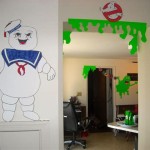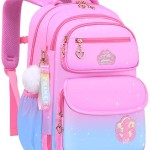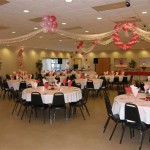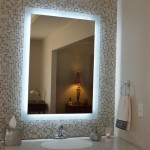How To Decorate Floating Shelves
Floating shelves offer a versatile and stylish way to enhance wall space, providing display areas for decorative items and functional storage. Properly decorated, they can elevate a room's aesthetic and contribute to a sense of organization. This article will guide readers through the process of decorating floating shelves effectively.
Planning and Preparation: Before placing any objects on the shelves, thoughtful planning is essential. Consider the room's existing decor, the shelves' size and placement, and the overall style one aims to achieve. A cohesive look is more readily attainable with a clear vision in mind. One should also consider the weight capacity of the shelves to ensure safe and stable display.
Creating Visual Balance: Visual balance is key to an aesthetically pleasing arrangement. Distributing weight and visual interest evenly across the shelves is crucial. Avoid overcrowding any single shelf and strive for a sense of harmony. This can be achieved through the strategic placement of taller items alongside shorter ones, creating visual triangles or pyramids.
Layering and Depth: Layering objects on a shelf adds depth and dimension. Placing smaller items in front of larger ones creates a sense of visual intrigue and prevents a flat, monotonous appearance. Consider using books, small boxes, or decorative trays as platforms to elevate certain items and create varied heights.
Incorporating Books: Books are a versatile element in shelf decor. They can be stacked horizontally or vertically, creating visual interest and texture. Organizing books by color can create a visually striking effect. Interspersing decorative objects between stacks of books adds further visual interest.
Utilizing Decorative Objects: Decorative objects add personality and style to floating shelves. These can include vases, sculptures, framed photos, plants, or other items that reflect one's interests and aesthetic preferences. When selecting decorative objects, consider the overall color palette and style of the room.
Adding Greenery: Plants add a touch of life and vibrancy to any space. Small potted plants or trailing vines can be incorporated into the shelf arrangement to soften the overall look and add a touch of nature. Choose plants that thrive in the lighting conditions of the room and are appropriately sized for the shelves.
Playing with Texture and Material: Varying the textures and materials of the objects displayed on the shelves adds another layer of visual interest. Combine items made of wood, metal, ceramic, glass, or fabric to create a dynamic and engaging display. This interplay of textures creates a sense of richness and depth.
Color Coordination: Consider the existing color scheme of the room when selecting items for the shelves. Choose colors that complement the existing decor and create a cohesive look. One can either opt for a monochromatic scheme or introduce pops of color to create a focal point.
The Rule of Thirds: Applying the rule of thirds, a principle of photography, can be helpful in creating visually appealing shelf arrangements. Divide the shelf space into thirds, both horizontally and vertically, and place key elements at the intersecting points. This technique creates a sense of balance and visual harmony.
Negative Space: Avoid overcrowding the shelves. Leaving some empty space, known as negative space, is crucial for visual balance and allows the displayed items to breathe. Negative space prevents the shelves from appearing cluttered and overwhelming.
Personal Touches: Adding personal touches, such as framed family photos, travel souvenirs, or handcrafted items, can make the space feel more inviting and reflective of one's personality. These personal items add a sense of warmth and authenticity to the room.
Regular Adjustments: Decorating floating shelves is not a static process. Regularly reassessing the arrangement and making adjustments can help maintain a fresh and engaging display. As tastes evolve or seasonal decor changes, the shelves can be adapted to reflect these changes.
Styling Tips for Specific Rooms: The function of a room should influence the styling of the floating shelves. In a kitchen, the shelves might display cookbooks, spices, and decorative jars. In a living room, they could showcase books, decorative objects, and plants. In a bathroom, they might hold towels, toiletries, and candles. Tailoring the shelf décor to the room's purpose enhances its functionality and aesthetic appeal.
Lighting Considerations: Lighting can significantly impact the appearance of the floating shelves and the items displayed on them. Consider adding small spotlights or LED strip lights under the shelves to highlight the objects and create a more dramatic effect. Natural light should also be considered when arranging items on the shelves.
By following these guidelines, individuals can effectively decorate floating shelves, creating a stylish and functional element in any room.

How To Style Shelves In 7 Simple Steps And My Fall Shelf Decor Abby Organizes

8 Ways To Decorate With Floating Shelves Fusion Furniture Inc

22 Best Diy Floating Shelf Ideas For 2025

How To Decorate Floating Shelves Ornamental Decorative Millwork

Ideas For Floating Shelves Shelf Styles

12 Tips And Secrets For How To Decorate Shelves A Free Checklist Worthing Court Diy Home Decor Made Easy

The Essential Guide To Styling Floating Shelves Bloom In Black

How To Decorate Floating Shelves The Ultimate Guide Van Dyke S Rers

The Scoop On Floating Shelves

Floating Shelf Ping Guide The Best Places To
Related Posts







